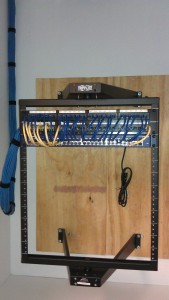
Challenges and Planning of a Structured Cable System – Part 3
 As previously discussed, the transition to IP-based security products and the rapid increase in business applications has resulted in end-users expecting greater video, audio, and data integration. These items require delivery over a standardized structured cable system. The following are the benefits offered by structured cabling for security systems. Part 3 will cover the Challenges and Planning of a Structured Cabling System.
As previously discussed, the transition to IP-based security products and the rapid increase in business applications has resulted in end-users expecting greater video, audio, and data integration. These items require delivery over a standardized structured cable system. The following are the benefits offered by structured cabling for security systems. Part 3 will cover the Challenges and Planning of a Structured Cabling System.
Challenges
Typically, customers exploring the security market are advised that the only method for deploying a new access control system or an IP video surveillance system is through the removal of all current coaxial or UTP cable and then the installation of an entirely new Cat 5/6 structured cabling network.
Another method is much less disruptive and cheaper. It uses existing cable and employs an IP transmission system that is a hybrid. There are numerous hybrid transmission systems available that enable installers to make good use of extended Ethernet and PoE power distances through existing cable.
Planning
An effective, structured cabling system supports all the communication needs of a company with the integrated flexibility that enables users to link to CCTV cameras, VoIP telephones, access control points, and data devices. Planning a security system upgrade will include several crucial considerations as summarized below.
- Applications: What will the system accommodate now as far as data, video, voice, and multimedia applications? What emerging technologies will be adapted in the future?
- Service Lifetime: The service lifetime of a structured cabling system should be 15 to 20 years because it will be the spine of an organization’s communications network.
- Compatibility: The applications that will function on the structured cabling system for the foreseeable future should be compatible with it.
- Bandwidth: As bandwidth demand will usually increase because of business growth, a company must consider present and future demand.
- Users: For the 15 to 20 year service lifetime of the structured cabling system, the estimated number of users during this period should determine the capacity required.
- Modifications: Fiber-optic technologies are being developed rapidly, and the design of a structured cabling network should include flexibility in order to accommodate modifications and additional users.
Union Network Cabling
When union work requires a unionized cabling group, call on Union Network Cabling for your commercial Cat5e/6/6a and fiber cabling projects. Specializing in cabling for data, voice, security and the latest WiFi and LiFi solutions. Phone: (202) 462-4290
